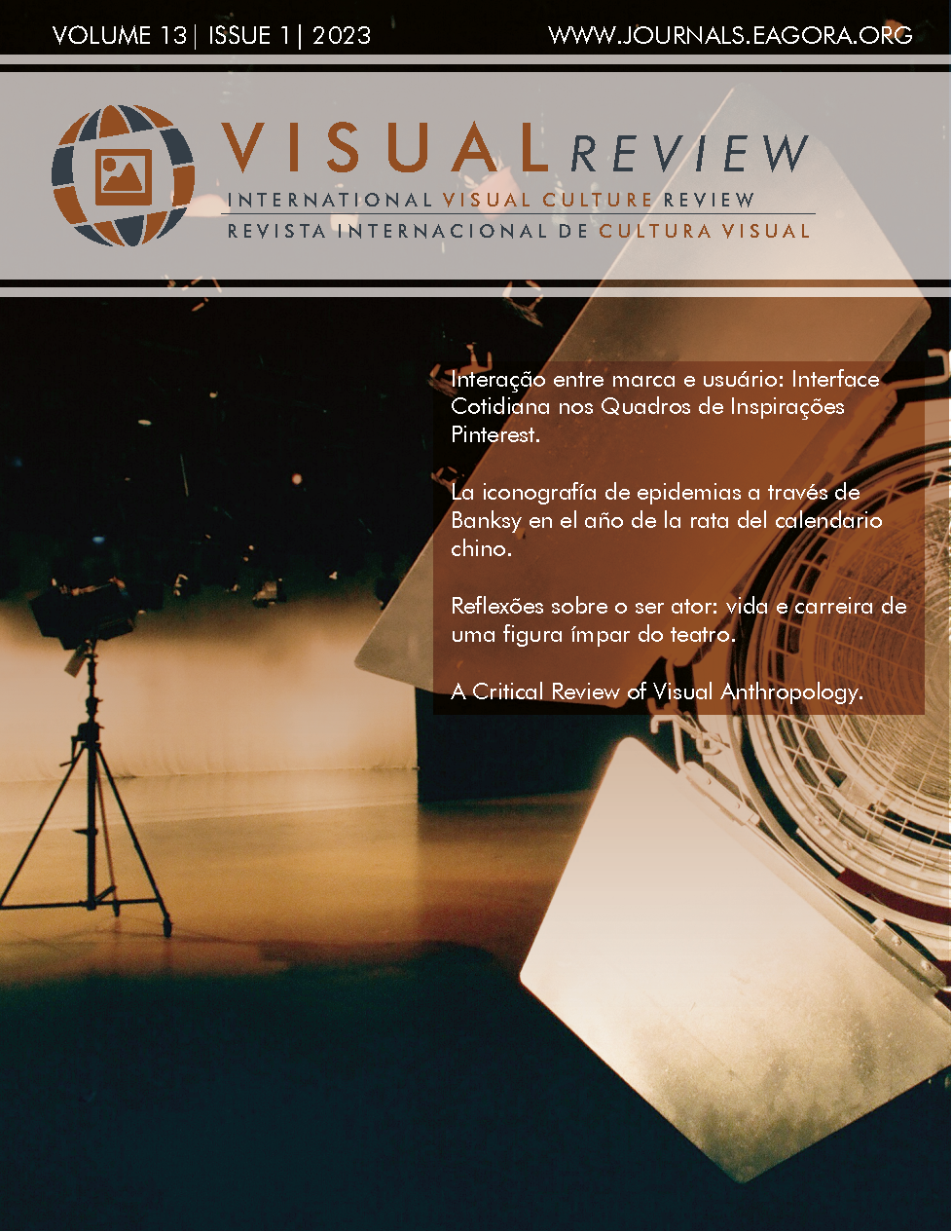Mythological and Archetypal Elements in Cinema
An analytical Psychology vView of The princess bride (1987)
DOI:
https://doi.org/10.37467/revvisual.v13.4531Keywords:
Cinema, Movie, Collective unconscius, Archetype, Mythology, Analytical pscyhology, The princess brideAbstract
The Princess Bride is a cult film packed with symbolic and mythological elements. This study follows the line of works that claim that the fiction projected in films has the potential to help an individual grow in self-awareness and paves the way towards individuation, by making the symbolic elements conscious. (Hauke, 2009; Izod, 2000). From the notion of collective unconscious of C. G. Jung and "the hero's journey” (Campbell, 2017), and through the analysis of the mythological and archetypal content this work offers us an approach to a reading of the fifth art from a profound psychological perspective.
Downloads
Global Statistics ℹ️
|
576
Views
|
337
Downloads
|
|
913
Total
|
|
References
Campbell, J. (2018). Las máscaras de Dios. Mitología primitiva. Vol. 3. Atalanta.
Campbell, J. (2017). El héroe de las mil caras. Psicoanálisis del mito. Fondo de cultura económica.
Cerezo, R. B. (2020). Como desees: Historias inconcebibles del rodaje de “La princesa prometida”| Cary Elwes (con Joe Layden). Creneida. Anuario de Literaturas Hispánicas, (8), 479-484. DOI: https://doi.org/10.21071/calh.vi8.13219
Edinger, E. (2018). Ego y arquetipos. Una ventana a los símbolos de transformación. Sirena de los vientos.
Eliade, M. (1991). Mito y realidad. Labor.
Guacaneme, J. P. (2010). Orígenes y simbología de lo sagrado en el pensamiento de Rudolf Otto. Franciscanum. Revista de las ciencias del espíritu, 52(153), 275-308.
Hauke, C. (2009). Turning on and tuning out: new technology, image, analysis. Journal of Analytical Psychology, 54(1), 43–60 https://doi.org/10.1111/j.1468-5922.2008.01756.x DOI: https://doi.org/10.1111/j.1468-5922.2008.01756.x
Izod, J. (2000). Active imagination and the analysis of film. Journal of Analytical Psychology, 45(2), 267–285 https://doi.org/10.1111/1465-5922.00155 DOI: https://doi.org/10.1111/1465-5922.00155
Jung, C. G. (2011). Obra completa: La dinámica de lo inconsciente. Vol. 8. 2ª Edición. Trotta
Jung, C. G. (2015). Obra completa: Los arquetipos y lo inconsciente colectivo. Vol. 9/1. Trotta.
Jung, C. G. (2016). Obra completa: Acerca de la psicología de la religión occidental y de la religión oriental. Vol. 11. Trotta.
Mac Guire, W., & Hull, R. F. C. (Eds.). (2000). Encuentros con Jung. Trotta.
Stein, M. B. (2007). El principio de individuación: hacia el desarrollo de la conciencia humana. Luciérnaga.
Downloads
Published
How to Cite
Issue
Section
License
Those authors who publish in this journal accept the following terms:
-
Authors retain copyright.
-
Authors transfer to the journal the right of first publication. The journal also owns the publishing rights.
-
All published contents are governed by an Attribution-NoDerivatives 4.0 International License.
Access the informative version and legal text of the license. By virtue of this, third parties are allowed to use what is published as long as they mention the authorship of the work and the first publication in this journal. If you transform the material, you may not distribute the modified work. -
Authors may make other independent and additional contractual arrangements for non-exclusive distribution of the version of the article published in this journal (e.g., inclusion in an institutional repository or publication in a book) as long as they clearly indicate that the work was first published in this journal.
- Authors are allowed and recommended to publish their work on the Internet (for example on institutional and personal websites), following the publication of, and referencing the journal, as this could lead to constructive exchanges and a more extensive and quick circulation of published works (see The Effect of Open Access).













